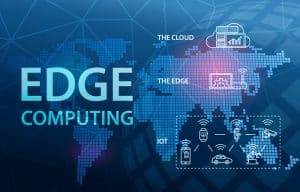
Earlier entrants are getting a head start on reaping the benefits of edge computing and they are providing roadmaps and lessons that will benefit everyone across the board.
The gold rush is on to capitalize on edge computing, but certain industries and types of companies are more likely to start seeing the results somewhat earlier than the rest. Leaders in edge implementations will be organizations in the transportation and manufacturing sectors serviced by cloud and technology manufacturers.
That’s the word from Akash Bhatia and a team of BCG contributors, who earlier this year looked at the ways edge computing is reshaping companies across major industry groups, noting that edge computing is poised to generate winners and losers in the manner of prior technology shifts such as cloud computing. However, while cloud made access and implementations far simpler for enterprises, edge computing requires a more complex set of skills and capabilities, so today’s winners may not be tomorrow’s.
See also: Edge Computing vs. Cloud Computing: A Primer
Of course, edge computing requires an ecosystem of providers to support the above industry implementations. The BCG analysts identified seven types of edge computing providers that will be taking the lead in the emerging edge economy:
- Public cloud providers. The edge is a natural extension for public cloud platforms, “combining the cloud’s computing and storage capacity with the edge’s hardware and connectivity into a hybrid cloud,” BCG says. “Cloud providers are investing outside their core by following three approaches. They are extending their businesses vertically into hardware and chips, partnering with other companies to create ecosystems, and taking advantage of their scale to continue their horizontal expansion.”
- Hardware and chip manufacturers. These companies have a natural and nearby opportunity to develop sensors, gateway, and other devices for the edge. Some of this equipment, such as oil wells and farm implements, will be installed in harsh conditions in the field—potentially new environments for manufacturers. The edge also gives them an opportunity to move upstream into industry-specific applications and platforms, taking advantage of the AI processing capabilities of new chips. Hardware manufacturers will likely need to utilize both hardware and software to compete against public cloud providers and cooperate with them in developing ecosystems. Getting this balance right will be key.”
- Industrial goods companies. “These companies are pursuing approaches similar to those of hardware manufacturers. They are embedding edge capabilities into their products and expanding into applications and platforms by working with existing customers and partners. Their success depends on their ability to demonstrate that they have the software capabilities, either in-house or in partnership with others, that the edge requires. These companies may have a narrow opportunity to build end-to-end solutions, a strategy being deployed by Tesla, the electric-car maker.
- Content Distribution Networks. These networks “have been in the edge business longer than most companies,” the BCG analysts note. “They have an opportunity to move beyond their core capability of caching video streams to offer other services, such as cloud management and security for customers. The rollout of 5G will create additional opportunities to provide local-access computing capabilities close to the edge.” These companies, BCG adds, “have natural ecosystem or partnership opportunities with telecom operators.”
- Telecom companies. The rollout of 5G networks may catapult telecoms into leadership roles at the edge. They also may partner with cloud companies to gain an edge foothold. “They will build business cases around such technologies as mobile edge computing — placing servers near 5G cell towers, narrowband IoT, and ultra-reliable low-latency communication for mission-critical uses such as remote surgery and self-driving vehicles.”
- Startups. “The venture community has been actively investing in the IoT and edge computing—specifically, in companies offering applications and analytics that provide convenient solutions and are easy for customers to adopt.”
Several industry-specific areas of focus will comprise the bulk of emerging edge applications. What’s significant, the BCG analysts say, is that these six categories will account for 78% of the total edge market.
- Connected transportation. “This includes private vehicles, public transit, trucks, and bicycle and scooter sharing,” the BCG analysts point out.
- Remote monitoring and maintenance. This will be a game-changer for the Industry 4.0 movement, which needs low latency, high reliability, and security. “Many large manufacturers are already fairly advanced in automation and are pioneering edge architectures built around real-time machine-learning algorithms. Other companies with legacy assets are much less advanced in adoption but are laying the groundwork for rapid growth.
- Augmented and virtual reality. “Intelligence at the periphery could unlock AR use cases in retail, manufacturing, or health care and unleash consumer VR products.”
- Smart grid. “The smart grid-connected power plants, infrastructure, and systems used for outage detection and energy routing—is one of the most mature components of the edge, especially in developed markets.”
- Robots and automation. Driven by Industry 4.0 and machine learning, “robotics and automation depend on both human-like latency and always-on connectivity. The edge can help ensure both.”
- Video analytics. “Remote video cameras are inexpensive, but sending live video streams to the cloud can be expensive. By processing data within the device or on-premises, the edge can help lower costs and reduce latency.”
The rise of edge computing means opportunities across the board for all companies across all industries. While the earlier entrants identified by BCG are getting a head start on reaping the benefits of edge, they are also providing roadmaps and lessons that will benefit everyone across the board.







